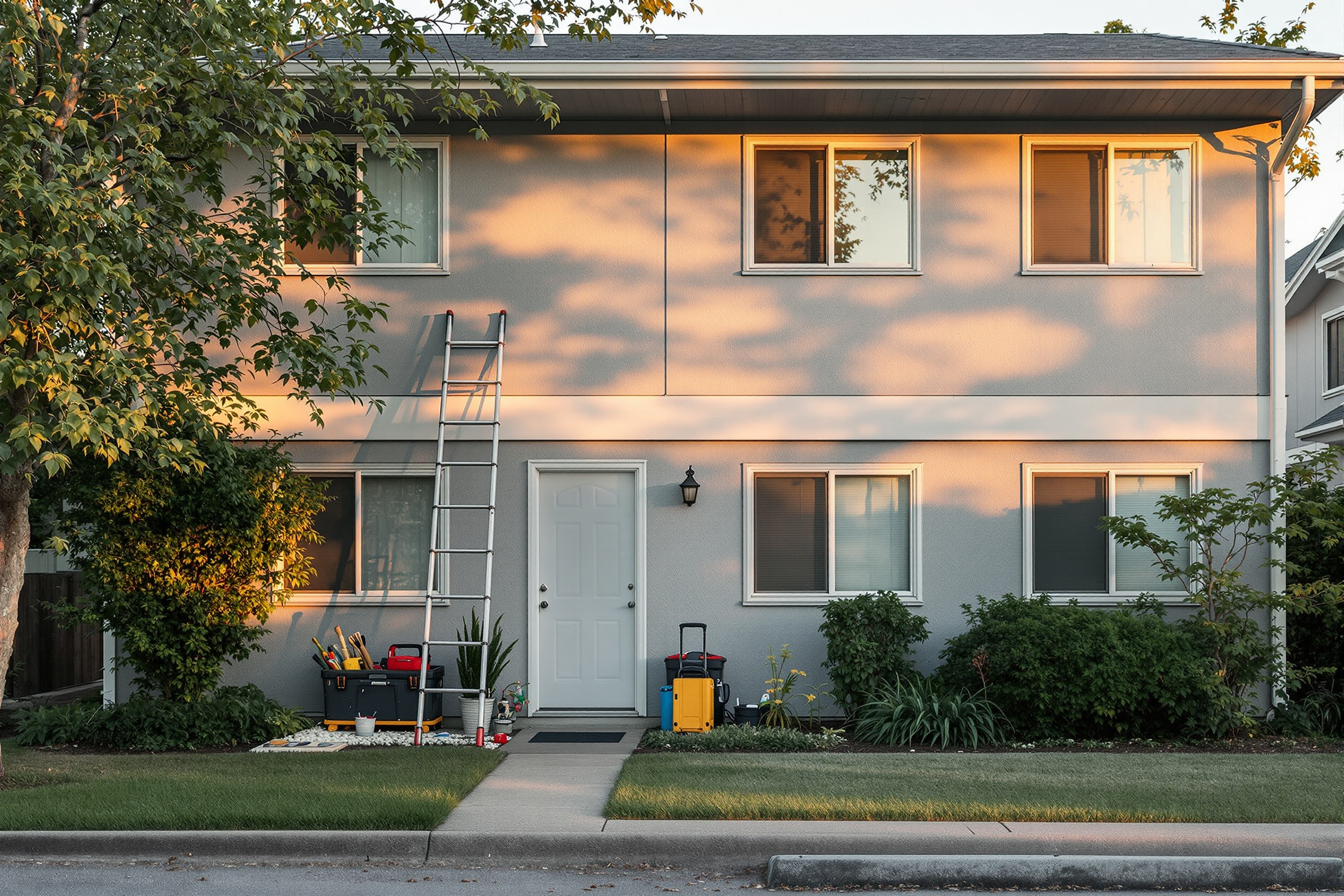Are you trying to decide whether to allow pets in your rental properties? With so many prospective tenants seeking homes that will welcome their furry best friends, you’re likely weighing the pros of possibly filling your rental faster vs. the cons of potential pet damage.
Should you choose to permit pets, one reliable way to protect your property in case of damage is to charge a pet fee.
A pet fee is a one-time non-refundable charge that renters pay to have pets while living in your rental property. It’s typically added to the rent or security deposit.
This article dives deep into the world of pet fees for rental properties. You'll discover the benefits of charging pet fees, learn how to set them correctly, and get answers to the most frequently asked questions about pet fees.
By the end, you’ll have the knowledge to make a well-informed decision about pet fees that benefits you and your renters.
Pet Fee vs. Pet Rent vs. Pet Deposit
The various terms associated with pets in rental properties can be confusing. Do you call it a pet fee, pet rent, or a pet deposit—and what’s the difference between them? Here’s a breakdown of each term:
- Pet fee: A one-time, non-refundable fee used to cover any associated costs of allowing pets on the property. According to Zillow, these charges can range from $50 to $500 per pet, depending on the size, weight, and type of pet. Some landlords use this fee to compensate for any potential damage caused by pets in advance.
- Pet rent: A monthly fee charged to tenants with pets. The amount varies between $25 and $100 per pet each month. It depends on your location and the overall rental market. This fee offsets the additional cost of having pets on the premises, such as increased wear and tear on the property.
- Pet deposit: A one-time, refundable deposit collected from tenants with pets. Like a traditional security deposit, landlords typically use pet deposits as collateral to cover any damage caused by pets. It’s usually anywhere from $200 to $500 per pet. Note that pet deposits are refundable, unlike pet fees or pet rent.
Now that you understand each option, you can decide which works best for you and your rental property. Each one has advantages and disadvantages, so it’s up to you to determine which fits your rental property’s needs.
Benefits of Charging a Pet Fee
You may be wary of charging pet fees, fearing they’ll deter potential tenants with pets from renting your property. However, charging pet fees can help mitigate the financial risks associated with pets and improve the overall quality of your rental.
First and foremost, pet fees provide a level of financial protection in case a pet causes damage to your rental property. A cat may scratch up the carpet, and a dog may chew the baseboards or leave scuff marks on doors. These damages add up and can become costly, but charging a pet fee helps cover these additional costs.
Pet fees can also make your rental property more attractive to pet owners willing to pay extra for the peace of mind provided by a pet-friendly environment. The Humane Society notes that 72% of renters have pets yet struggle to find housing. Being open to pets can make your property more competitive in the rental market and bring you a wider pool of potential tenants.
For tenants, the benefits of charging pet fees are equally as important. Renters realize you're serious about creating a welcoming place for their pets and willing to invest money to ensure the safety and cleanliness of your home.
By charging pet fees, your tenants can enjoy being with their pets without worrying about an additional financial burden during their tenancy. Your tenants will already expect pet-related expenses while renting from you, and knowing exactly how much they owe alleviates any concern about surprise fees in the future.
Lastly, charging pet fees encourages renters to have well-behaved pets. If they know they'll have to pay extra for damages caused by their animal companions, they'll likely take steps to prevent those damages from occurring. This results in happier tenants, more respectful pets, fewer complaints, and a better overall rental experience for everyone.
%2520(1).png)
Average Pet Fees, Rents, and Deposits in Different Locations
Knowing the average pet fees in different locations can be helpful when setting your own. Here's a guide to help you establish competitive rates that cater to you and your pet-owning tenants.
Texas
According to a thread on the Bigger Pockets Forum, landlords in Texas are charging between $250 to $500 per pet for pet deposits. In Austin, pet deposits range from $150 to $500, while pet rent can be $25 to $50 per pet.
California
According to Pinnacle Property Management, landlords in California often charge non-refundable pet fees that range from $100 to $400 per pet on average. However, laws in California cap the total deposit amount (including a pet deposit), while landlords in cities with rent control laws must ensure that the total rent collected for people plus pets doesn't exceed the rent-controlled limit.
New York
Pet fees in New York can be higher than in other locations. StreetEasy reports landlords may charge between $500 to half a month's rent depending on the pet's size, weight, and breed, especially in high-demand areas like Manhattan. If you’re renting your property for $5,000 per month, a pet fee of $2,500 may be the market norm.
By taking into account average pet fees for your area, you can set competitive rates while also accommodating pet owners. If you aren’t sure how to set pet fees for your rental property, consider consulting with a local property management specialist.
How to Make Sure Pet Fees Are Set Correctly
Establishing pet fees requires careful consideration of several factors.
When determining pet fees, consider the type and size of the pet you’ll allow on your property, your rental property's location, and the local rental market. These factors can help you decide on a competitive yet profitable price that won't discourage potential tenants with pets. Here are a couple of examples:
- For a one-bedroom apartment in a pet-friendly neighborhood and a competitive rental market, consider charging a $300 non-refundable pet fee for a medium-sized dog (up to 50 lbs) or a cat. This amount accounts for the apartment size and any necessary cleaning, repair, or carpet replacement when the tenant moves out.
- If you own a luxury apartment in a high-end neighborhood, you can charge a higher pet fee. For example, an $800 non-refundable pet fee for a large dog (over 75 lbs) or an exotic pet may be appropriate. It reflects the maintenance and liability costs associated with pets requiring special attention or that may cause more damage to the property.
Remember, the key is to set a fair and profitable fee that appeals to pet owners and covers your expenses and risks.
Finally, be transparent with your tenants about any costs associated with pet ownership. Clearly outline the fees associated with the pet rent, pet deposit, or pet fees in your lease agreement and explain how you use them to cover any pet-related damages. By stating all costs upfront, you help eliminate any misunderstandings between you and your tenants.
FAQs about Renting to Tenants with Pets
Here are some frequently asked questions and answers about pet policies for landlords.
Q: Should I charge for pets?
A: Yes, charging for pets is a standard practice in the rental industry. Pet fees, pet deposits, and pet rent can help mitigate any financial risks associated with pets while encouraging tenants to be responsible pet owners.
Q: Can I charge pet rent and a pet fee?
A: Yes, you can charge both pet rent and a pet fee, but you want to ensure that the total pet-related costs are reasonable and fair.
Q: Should I have a weight limit or breed restriction on pets?
A: This depends on your personal preference as a landlord and the property itself. For example, a weight limit of 50 pounds or less could be a good idea for pets in a smaller apartment or home.
Implementing breed or species restrictions can be a practical solution when a property may not be adequately prepared to accommodate certain types of pets. It is worth noting that some rescue animals may have a combination of breeds, and breed-specific limitations can reinforce stereotypes and narrow down the number of prospective tenants. Generally, species and size restrictions are satisfactory measures to safeguard your property.
Additionally, you should always comply with your local housing laws, like those that prohibit pet fees for service animals and emotional support animals. .
Q: How do I include a pet addendum in the lease?
A: A pet addendum is a separate document included with the lease agreement. It outlines the rules and regulations for tenants with pets, including fees, pet species/breeds, weight limits, and any restrictions on the number of pets per household. Both the landlord and tenant should sign an addendum.
Q: What advice do you have for landlord insurance when a rental property has pets?
A: When allowing pets in your rental property, it’s essential to have landlord insurance that covers pet-related damage. You can learn more about choosing the right insurance by reading our guide on 8 landlord insurance factors to consider.







